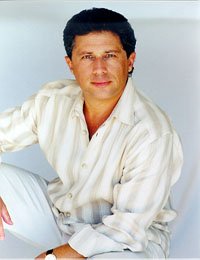 I am sometimes consulted by people in the corporate sector to shed light on a particular situation or relationship. In one such case, I walked into the office of a client and he looked at me as though I were an alien from outer space, still dirty with star dust. He had forgotten about our meeting, even though I had flown from San Francisco to Boston at his request.
I am sometimes consulted by people in the corporate sector to shed light on a particular situation or relationship. In one such case, I walked into the office of a client and he looked at me as though I were an alien from outer space, still dirty with star dust. He had forgotten about our meeting, even though I had flown from San Francisco to Boston at his request.
"Well, anyway, it's a good thing you're here. I feel like my ninety-four year old grandfather. Every time I visit him, he looks at me and pleads, 'Just tell me where I am!' That's how I feel. I'm so buried with this project, I don't even know where I am." He couldn't see anything except the shadows of his own anxiety and confusion. His every action was aimed at these shadows and produced only an escalation of tension and helplessness within the office.
We must all learn to see clearly what is actually happening and be able to discern the difference between what is real and what is imaginary.
Most people don't see well, if at all. It's understandable: we never learned how. Anais Nin wrote, "We don't see things as they are, we see them as we are." Isn't this true? We usually see only our own thoughts and feelings about what we imagine is happening superimposed on what actually is happening.
So, how does one see more clearly, more realistically? Our first response is to do something: I've got to learn something new. Searching through the plethora of self-improvement books, audio- and videotape programs, and seminars, we can find numerous techniques, strategies, and philosophies.
We can also find plenty of new paradigms. New paradigms are very au courant. A paradigm is a pattern of perceiving reality. You may be tempted to exchange your current paradigm for one of these new paradigms, thinking that this will help you see better.
My advice is: If you see a new paradigm, kill it. It will only make things worse
In order to see, we must be free from patterns, because a pattern-any pattern-is another projection of our mind onto what we are trying to see. More shadows. More futility.
My response to my client's state-as it is with almost all situations asking for clarity, problems asking for solutions, doubts asking for assurance-was to request that he sit quietly, relax, attend to his breathing and let silence suffuse his whole being. I requested that he become more aware; not that he think differently or change anything, but that he simply enter into awareness through inner silence.
Awareness cannot be objectified, as it is a unified field of consciousness, so it cannot be strictly defined, only alluded to. In this unified field, there is only awareness itself, not situations and objects and thoughts about situations and objects. Awareness is a direct seeing into the moment, without projection; it is clear insight.
In order to see, we must develop clear awareness. This means that we do not add anything of ourself onto a situation. In order to not add our distorting projections, we must internally free ourself from images, opinions, beliefs, and interests in outcomes or results. These are all obstructions to clarity. When we dissolve these internal structures of patterned perceiving, awareness itself remains.
We can only see deeply into the pond of the mind if the sediment of thoughts and images has settled through the practice of inner silence, of meditation. When our internal structures of patterned perceiving collapses in silence, awareness itself grows like a lovely lotus above the mud. The philosopher J. K. Krishnamurti said, "Silence comes when thought has understood its own beginning, its own nature, and how all thought is never free but always old. To see all this, to see the movement of every thought, to understand it, to be aware of it, is to come to the silence which is meditation."
Awareness itself, not representational thinking and mechanical memory, becomes the means of seeing, of perceiving, what is happening. Awareness is not distorted by second and third thoughts, or by anxiety, doubt, self-interest. Awareness does not turn away in denial, does not grab with desire. Awareness is simple, quiet, present. Awareness means what is.The great sage Ramana Maharshi said, "Effortless and choiceless awareness is our real state."
Entering into our real state will always illuminate who we are, where we are, and what we are doing. We do not need to struggle, to resist, to tear at life. We do not need to impose our will on life. We do not need to act rashly from fear or inelegantly from anxiety and confusion. Awareness itself is enough. Our real state is enough.
May everyone be at peace, in love, and know their most perfect Self.
Robert Rabbin is an author, speaker, and advisor. He can be reached via e-mail at robrabbin@infoasis.com, or by writing: 2629 Manhattan Ave., Ste. 192, Hermosa Beach, CA 90254. His new book, The Sacred Hub (The Crossing Press, ISBN: 0-89594-837-0), is available in bookstores or from the publisher at (800) 777-1048.
"Echoes in Silence" is a bi-weekly column by Robert Rabbin--author, speaker, and advisor--who has spend thirty years using self-inquiry as a means to explore the true nature of self, mind, reality, and consciousness.
His new book, The Sacred Hub (The Crossing Press, ISBN: 0-89594-837-0), is available through the bookstores nationwide.